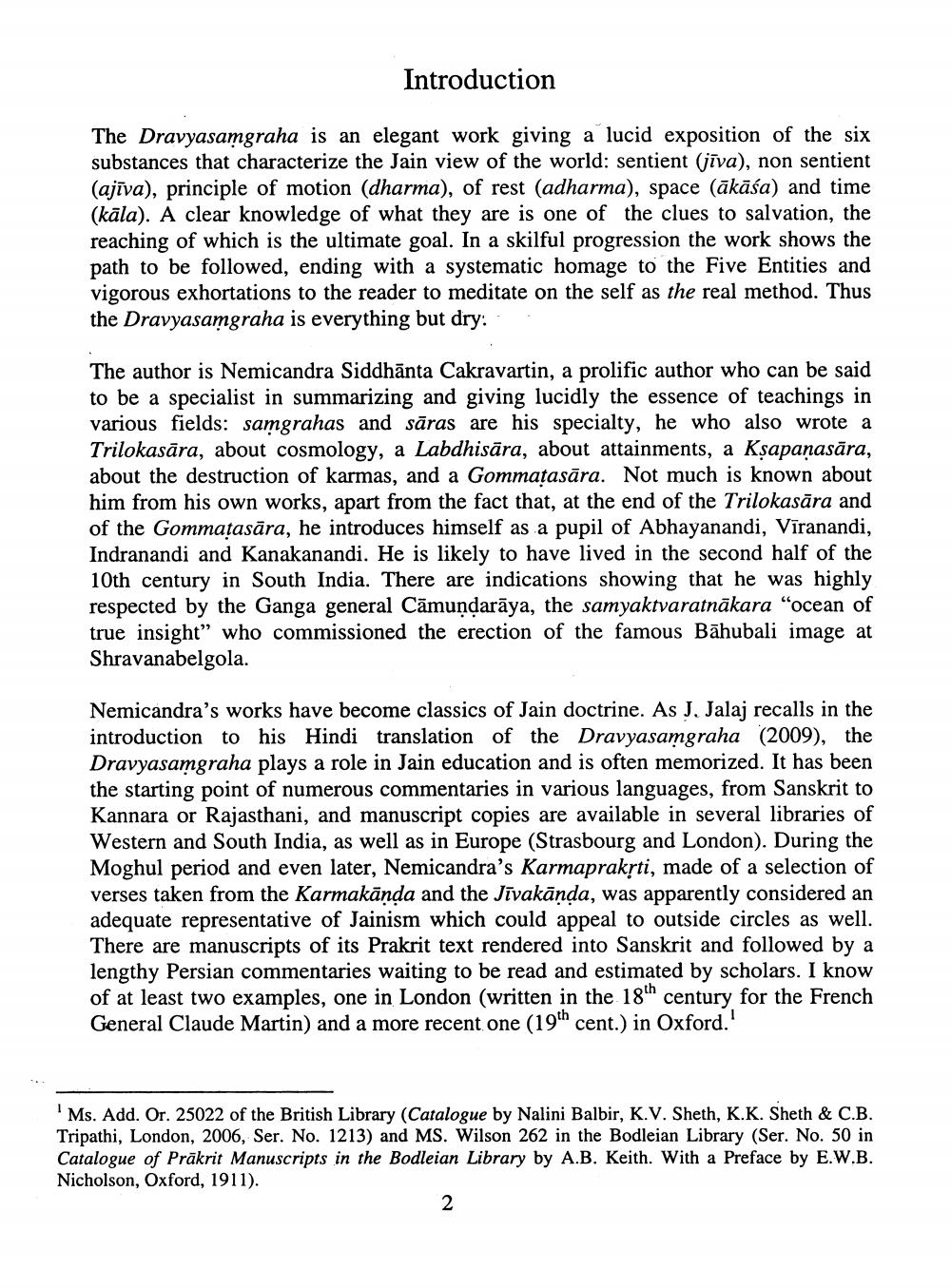Book Title: Dravya Samgraha Author(s): Nalini Balbir Publisher: Hindi Granth Karyalay View full book textPage 4
________________ Introduction The Dravyasamgraha is an elegant work giving a lucid exposition of the six substances that characterize the Jain view of the world: sentient (jīva), non sentient (ajīva), principle of motion (dharma), of rest (adharma), space (ākāśa) and time (kāla). A clear knowledge of what they are is one of the clues to salvation, the reaching of which is the ultimate goal. In a skilful progression the work shows the path to be followed, ending with a systematic homage to the Five Entities and vigorous exhortations to the reader to meditate on the self as the real method. Thus the Dravyasamgraha is everything but dry: The author is Nemicandra Siddhānta Cakravartin, a prolific author who can be said to be a specialist in summarizing and giving lucidly the essence of teachings in various fields: samgrahas and sāras are his specialty, he who also wrote a Trilokasāra, about cosmology, a Labdhisāra, about attainments, a Kșapaņasāra, about the destruction of karmas, and a Gommatasāra. Not much is known about him from his own works, apart from the fact that, at the end of the Trilokasāra and of the Gommațasāra, he introduces himself as a pupil of Abhayanandi, Viranandi, Indranandi and Kanakanandi. He is likely to have lived in the second half of the 10th century in South India. There are indications showing that he was highly respected by the Ganga general Cāmundarāya, the samyaktvaratnākara “ocean of true insight" who commissioned the erection of the famous Bāhubali image at Shravanabelgola. Nemicandra's works have become classics of Jain doctrine. As J. Jalaj recalls in the introduction to his Hindi translation of the Dravyasamgraha (2009), the Dravyasamgraha plays a role in Jain education and is often memorized. It has been the starting point of numerous commentaries in various languages, from Sanskrit to Kannara or Rajasthani, and manuscript copies are available in several libraries of Western and South India, as well as in Europe (Strasbourg and London). During the Moghul period and even later, Nemicandra's Karmapraksti, made of a selection of verses taken from the Karmakānda and the Jivakānda, was apparently considered an adequate representative of Jainism which could appeal to outside circles as well. There are manuscripts of its Prakrit text rendered into Sanskrit and followed by a lengthy Persian commentaries waiting to be read and estimated by scholars. I know of at least two examples, one in London (written in the 18th century for the French General Claude Martin) and a more recent one (19th cent.) in Oxford.' Ms. Add. Or. 25022 of the British Library (Catalogue by Nalini Balbir, K.V. Sheth, K.K. Sheth & C.B. Tripathi, London, 2006, Ser. No. 1213) and MS. Wilson 262 in the Bodleian Library (Ser. No. 50 in Catalogue of Prākrit Manuscripts in the Bodleian Library by A.B. Keith. With a Preface by E.W.B. Nicholson, Oxford, 1911).Page Navigation
1 2 3 4 5 6 7 8 9 10 11 12 13 14 15 16 17 18 19 20 21 22 23 24 25 26 27 28
